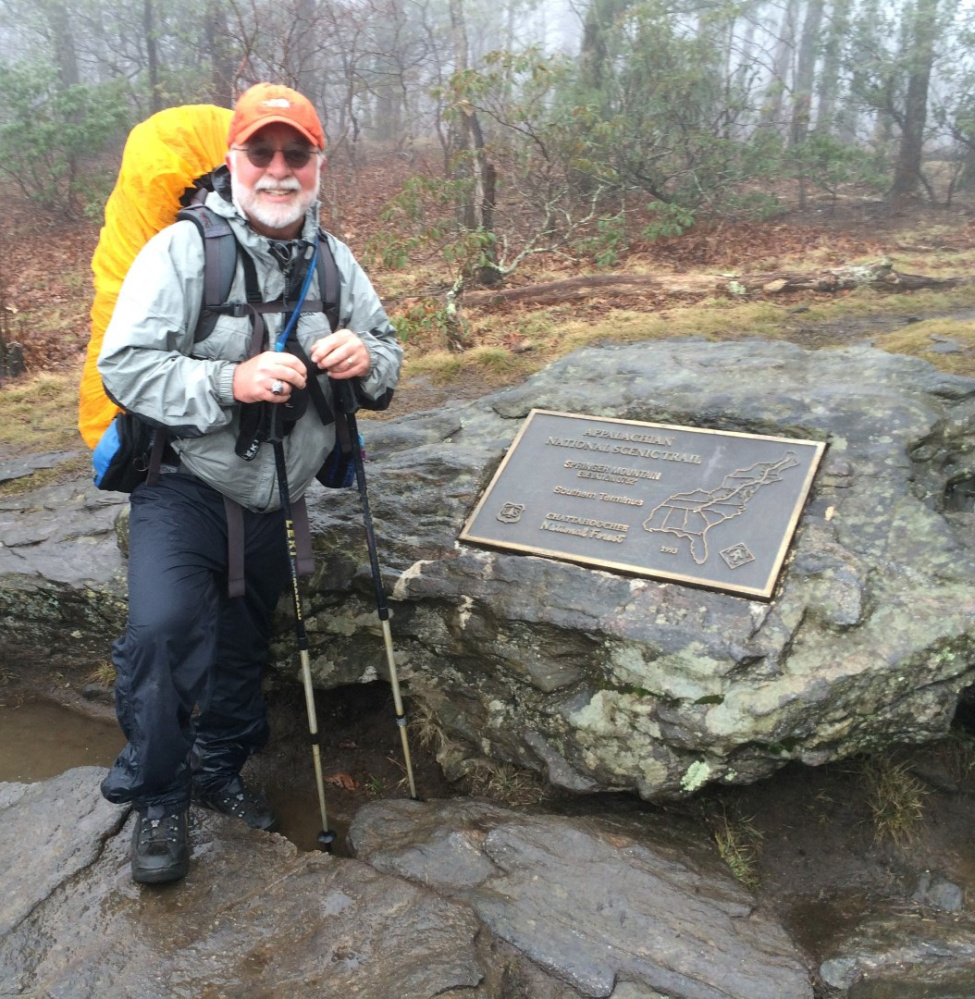Do you dream of thru-hiking the Appalachian Trail, of slipping out of civilization for a while, paring down to only the simple essentials that can be carried in a backpack, and taking on a challenge that is bigger than yourself? Perhaps 2016 is the year.
Most hikers opt for the traditional northbound trek from Georgia to Maine, leaving between mid-March and mid-April. If this is your choice, you’ve still got plenty of time to properly prepare, but start now. Southbound hikers generally depart Katahdin in late spring or early summer, giving you more time to gear up. Increasingly popular are “flip-flop” hikes, which start anywhere in the middle (ATC headquarters in Harper’s Ferry, West Virginia, is popular) at varying times.
It takes 5 million steps to hike the AT from end to end, and the real first steps – to decide to do it and then map out a plan – are the most difficult. And when you arrange your transportation to the starting point and tell everyone that you’re going, well, then you’re truly committed.
The Appalachian Trail Conservancy is the go-to resource for getting ready, and its guide, “Step-by-Step: An Introduction to Walking the Appalachian Trail,” is a helpful beginning. The ATC online store has guidebooks, map sets, data books and planning workbooks with suggested equipment lists, mail drop schedules, food resupply points, lodging options and such.
Work on getting your home affairs in order – you’ll be away for six months – and get outside and walk with a pack to get in shape. But don’t fret if the exercise gets pushed aside, as you’ll be taking it easy early on and slowly working into the hike.
Create an itinerary that has you covering 8-10 miles a day for the first couple weeks, then 10-12 miles for the next two. During the second month you’ll be reaching 12-15 miles per day. An average of 15-20 miles a day is common after that.
As you get deep into preparing to go, and even when you’re actually on the trail, try not to think about the entire 2,189 miles; it can be overwhelming and self-defeating. Instead, consider the hike in segments, as in 44 50-mile hikes.
Plan to hike from town to town, reveling in the trail experience and your newfound trail friends in between, and celebrate your interim progress with a bed, shower and laundry, a restaurant meal or two, a few cold ones and a fresh stock of groceries. All too soon, you’ll be months into the walk and wishing it would never end.
Buy quality equipment, including a 50- to 60-liter pack, sleeping bag rated to 20 degrees, foam or air mattress, cook stove (canister or alcohol), and a tent or hammock. Good rain gear and a hat, a layered system of clothing (enough but not too much), boots or shoes and a sock combination tested ahead of time (blisters are no fun) are essential. Trekking poles, small first aid kit, hydration system and waterproof stuff sacks for everything round out the more important items. A cellphone (service is better than you’d expect) will keep you in touch and serve as your camera.
Thru-hikers eat like bears, consuming 4,000 to 5,000 calories a day, and once into the hike you’ll want to eat constantly. Two pounds of food per day is a good plan. Some hikers mail freeze-dried or dehydrated food to stops along the way, while most buy groceries as they go. Resupply points are plentiful. The longest stretch between towns is about a week.
Strive to keep your base pack weight (excepting food, water and fuel), south of 20 pounds, the lighter the better. Keep in mind that you’re not on a camping trip, you’re hiking miles day after day, and you don’t need or want all that much.
Budget $2 to $3 per mile on-trail.
Carey Kish of Mount Desert Island completed his second thru-hike of the Appalachian Trail on Oct. 4. Follow more of Carey’s outdoor adventures at
mainetoday.com/blog/maineiac-outdoors
Send questions/comments to the editors.


